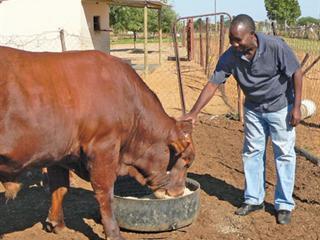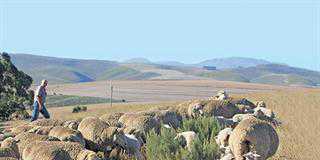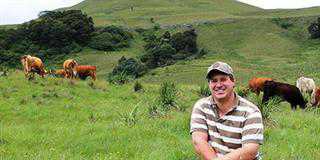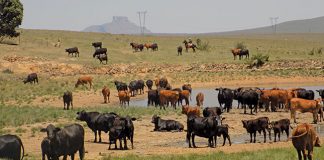
The story of Jonathan Lefakgomo demonstrates the frustrations of the aspirant commercial cattle farmer who is forced to operate on communal land. Yet it shows what can be achieved if you’re determined to succeed. Jonathan, who lives in the village of Mmametlhake about 70km north-east of Pretoria, started driving taxis in the city in 1976 and ended up as a taxi owner. In 1991, he bought six mixed-breed cows to keep on communal land in the small village of Seabe about 20km from Mmametlhake.
“Where I grew up, a man was judged by the number of cattle he had in his kraal,” he explains. By the time his herd had grown to about 60, he had developed an interest in commercial farming – and wanted to improve his herd. But he soon discovered the difficulty of trying to achieve this on communal land. “My cattle are run with community herds and mate with other bulls,” he explains. “Some of the bulls weren’t healthy and infected my cows.”
Renting land
To avoid the problem, Jonathan began looking to lease land, and in 2002, finally found suitable land in the Dinokeng district, just outside Hammanskraal, which belonged to a commercial farmer. When the owner died in 2006, Jonathan managed to lease land on another farm about 20km north of Hammanskraal. But seven of his cattle were stolen that year.
The continous worry about security proved too taxing, and two years later, Jonathan moved again, this time leasing land from a commercial farmer in Rust de Winter. But theft continued to plague him: several months later, eight of his cattle went missing. This incident, fortunately, had a happier ending. The police stopped a truck carrying several of Jonathan’s cattle, along with those belonging to other communal farmers in Seabe. Jonathan was able to phone fellow farmers to tell them them the good news about their cattle.
Back again
After the incident, Jonathan decided that the risk of leasing land far away was simply too great, and brought his herd back to Mmametlhake. Because there was not enough space on the communal land back home, he was forced to reduce the size of his herd, which was still about 60 strong at that time. He selected about 20, and sold the rest. It was 2010 and he was back in the communal set-up that makes it so hard to improve one’s cattle.
He realised that to achieve his goal of becoming a commercial farmer, he had to devise an improved system on the communal land that would work for him for the time being. He began by employing a full-time stockman, Hendrick Molwelang, to take the cattle to the grazing lands and stay with them until the evening. Because the lands don’t have any water, it is provided to the cattle three times a day – in the morning, at midday and in the evening.
He then bought a Brahman bull and selected a Bonsmara bull from his herd to start breeding. The bulls are not allowed to run with other cattle and are fed in the yard. Jonathan uses the Brahman on the unimproved cows to obtain Brahman-mix calves. He then runs the Brahman-mix heifers with the young Bonsmara bull. He chooses the Brahman as it grows well and can easily survive local conditions, while the Bonsmara adds high quality beef.
Breeding seasons
Because the communal land has no infrastructure, the breeding season is not controlled. But Jonathan has learned several tricks over the years – especially how to spot a cow in heat. “You’ll see bulls trying to move closer to the cow, or the cow will move closer to the bull,” he explains. He has taught his stockman to look out for this behaviour among his cattle, and in this way stop communal bulls from covering his cows.
Once the cow is on heat, it’s immediately brought to the kraal, where it’ll spend about a week with the bull and be home-fed. Jonathan buys ready- mixed feed from Obaro, which contains about 65% maize, 25% concentrates and 10% roughage.
He keeps the heifers as breeding stock, while the bull calves are weaned and placed in a feedlot before marketing. The bull calves are given the same feed mix from Obaro.
Jonathan usually weans the calves at eight months. But those born in winter, when grazing is minimal, are weaned a month earlier to reduce the pressure on their dams and help them recuperate quicker. Jonathan practises strict culling, and cows which fail to calve for two consecutive seasons are slaughtered. “They cost you money in inputs, such as supplements, vaccines and dips, and keeping them doesn’t pay,” he explains.
Future plans
For now, says Jonathan, profit, although important, must take second place to building up a commercial herd using the correct principles. As part of this, he and several other farmers with similar ambitions have approached the village chief, who has allocated them a section of the veld to make camps for grazing. The department of agriculture, meanwhile, has agreed to help them erect fences.
Jonathan explains that this will help a great deal as space in his yard is limited. But he is quick to add that he does not intend farming on communal land all his life. He plans to sell his taxis as soon as he is able to so that he can buy a farm of his own and set himself up as a true commercial cattle farmer.
Contact Jonathan Lefakgomo at 082 696 0597













